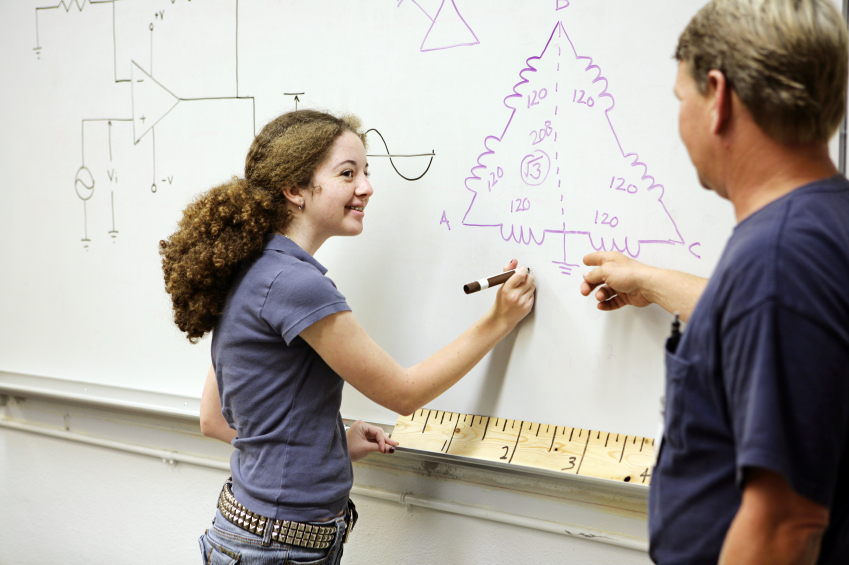
I recently attended the Colorado STEM Summit, an event whose mission included connecting educators and employers in science, technology, engineering and math fields to create a “more synergistic Colorado STEM system.” Speakers and panels covered issues relating to STEM industries and education fields.
A defining moment for artificial intelligence: ‘What is shoe?’
The keynote speaker was Thomas Friedman, New York Times columnist and author of The World is Flat: A Brief History of the 21st Century. In his speech, he tackled the complex issue of what 21st-century STEM students need.
In his address, Friedman painted a picture of a shifting world. One, he noted, that had reached the greatest inflection point since the invention of the printing press. The defining moment? Artificial intelligence computer Watson’s appearance on Jeopardy. More specifically, his word-play based answer “What is shoe?”
This, Friedman said, marked a significant shift in computers — from archivists to thinkers. As anyone who has run a Google search can attest, there are many ways artificial intelligence computers continue to expand their thinking. However, the very nature of modern computing has fundamentally changed the world. It has also had a profound influence on the job market and, in turn, Friedman’s talk suggests, should change the way we educate our young people.
Thomas Friedman’s concept of ‘STEMpathy’
Friedman’s most significant point in the talk can inform teaching, lesson design, and assessment. The future, Friedman said, isn’t about what we know. “Nobody cares what you know, because the Google machine knows everything,” he said. Rather, he argued, the future is about what we can do with what we know.
The thing that makes us uniquely different from computers, Friedman pointed out, is our humanity and empathy. If we can unite that with STEM education, students will be armed with “STEMpathy”, which cannot be found in an algorithm. “The faster the world gets, the more everything old and slow matters — the things you can’t download,” he said.
‘Paranoid optimists’ and student engagement
Friedman’s first tip was to “always think like a new immigrant.” This group, he said, functions as “paranoid optimists”. These are people who, without legacy or roots, feel they have to outwork and out-anticipate those around them.
Engaging in project-based learning, genius hour or 20 percent time, flipped classrooms, or other teaching strategies that facilitate student engagement can help students develop a hungry attitude about learning that allows them to be constantly striving.
‘Carve your initials’ into your work: Project-based learning
His next piece of advice was to “Do your job every day as if you would carve your initials in it when you were done.” Of course, teachers always ask students to write their names on their papers, but project-based or self-directed learning can help them understand the unique role they play in their own education.
Friedman’s advice was for employees but it’s clearly applicable to teachers and students. He challenges educators to find ways to develop curriculum that allows for our students to carve their initials into everything they do and carry the pride of an artisan.
PQ+CQ: Passion and curiosity are the driving forces behind success
The third and fourth pieces of advice are intertwined for educators and reliant upon the growth mindset. He advised that good STEM students and workers should always be in beta mode. According to Friedman, a person’s PQ (passion quotient) + CQ (curiosity quotient) is greater than his or her IQ (intelligence quotient).
In other words, the most successful employees and students both deeply understand that they should be engaged in a constant process of re-engineering and growth and that their passion and curiosity are driving forces behind their success. “This is an amazing time to be a maker. This is an amazing time to be a start-upper,” said Friedman.
Providing students access to process-based education, through multiple methods of drafting or continued attempts at success and growth can help reinforce this understanding that success is through constant willingness to reassess and try again, rather than by achieving and then stopping growth.
Bringing an entrepreneurial spirit to learning
His final piece of advice was to be relentlessly entrepreneurial. In this culture, entrepreneurs often exhibit passion and spirit, while also understanding how and where they can exhibit control. For students, this means understanding what motivates them.
Giving students affective skill training, which helps them tap into their motivation for education, combined with the freedom to explore that comes with project-based learning or genius-hour style projects will work well to help them approach their education as active, entrepreneurial learners, rather than passive recipients of teaching.
STEM training improves when humanity is emphasized
Friedman believes that this advice works to help those with STEM training express the qualities that make them uniquely human and separate them from the Watsons of the world. Active engagement, curiosity, and passion are incredible qualities of the human spirit that we can and should tap into with our students by exploring a variety of teaching methods that allow them to illustrate not what they can remember but what they can do.
Monica Fuglei is a graduate of the University of Nebraska in Omaha and a current faculty member of Arapahoe Community College in Colorado, where she teaches composition and creative writing.
Categorized as: Tips for Teachers and Classroom Resources
Tagged as: Engaging Activities
